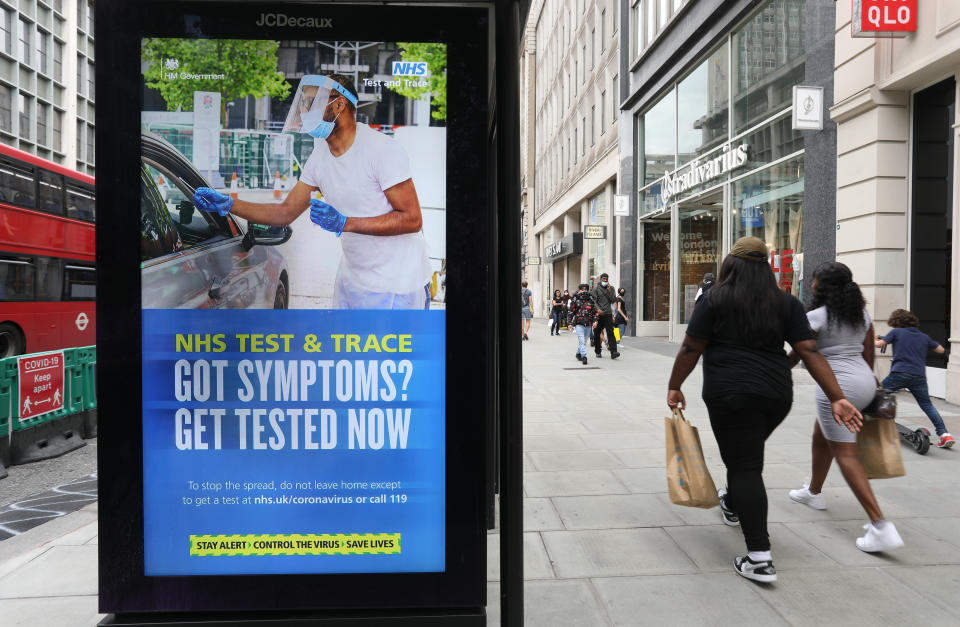Warning over NHS scam offering fake coronavirus test and trace kits

Fraudsters are attempting to exploit fears of coronavirus to con people out of money by asking for bank details to pay for fake test and trace kits, police have said.
The government is running a test and trace programme to inform anyone who has been in contact with someone who has shown COVID-19 symptoms in an attempt to stop the spread.
However, Staffordshire Police said fraudsters are using the programme for financial gain.
The force tweeted: “Fraudsters are pretending to be NHS test and trace staff and calling people asking for their bank details to take money for test kits.”
Alongside the warning, the force also posted a reminder that contact tracers would never ask for money, passwords or bank details.
⚠️ Test & Trace Scam alert ⚠️
Fraudsters are pretending to be NHS Test & Trace staff and calling people asking for their bank details to take money for test kits. pic.twitter.com/ARyLWlV9jF— Staffordshire Police (@StaffsPolice) June 18, 2020
The success of the test and trace programme came under scrutiny on Thursday after it was revealed that a total of 14,045 people who tested positive for COVID-19 in England had their case transferred to the tracing system during the first two weeks of its operation, according to Department of Health and Social Care (DHSC) figures.
Of this total, 10,192 people (73%) were reached and asked to provide details of recent contacts.
The figures cover the period 28 May 28 to 10 June.
During the first two weeks of test and trace, 87,639 people who had been identified as close contacts of people who had tested positive for COVID-19 were reached through the tracing system. This was 91% out of a total of 96,746 identified contacts.
The remaining 9,107 (9%) were identified as close contacts but were not reached.
The figures also show that 3% of people (418) who tested positive for COVID-19 during the two-week period could not be reached because their communication details were not provided.
A further 24% (3,435) were not reached and asked to provide contact details. This includes people who the service was unable to reach because there had been no response to text, email and call reminders.

The DHSC said some contacts who had been reached under the test and trace system had not agreed to self-isolate, despite having been in close contact with somebody who had tested positive for COVID-19.
There were also some contacts the system had been unable to reach, either because no contact details had been provided or they had not responded to text, email and call reminders.
Baroness Dido Harding, who heads the programme, admitted last week that it was not yet "gold standard" but was "fit for purpose" and ministers have continued to stress its importance in reducing and eventually ending social distancing measures.
Coronavirus: what happened today
Click here to sign up to the latest news, advice and information with our daily Catch-up newsletter
Read more about COVID-19
How to get a coronavirus test if you have symptoms
How easing of lockdown rules affects you
In pictures: How UK school classrooms could look in new normal
How public transport could look after lockdown
How our public spaces will change in the future
Help and advice
Read the full list of official FAQs here
10 tips from the NHS to help deal with anxiety
What to do if you think you have symptoms
How to get help if you've been furloughed

 Yahoo News
Yahoo News 

